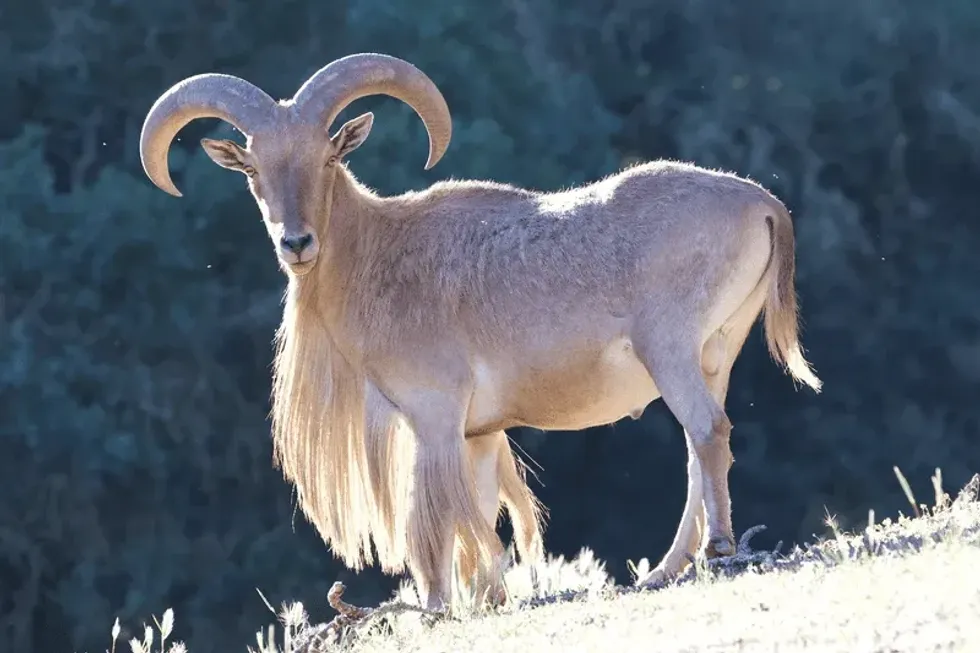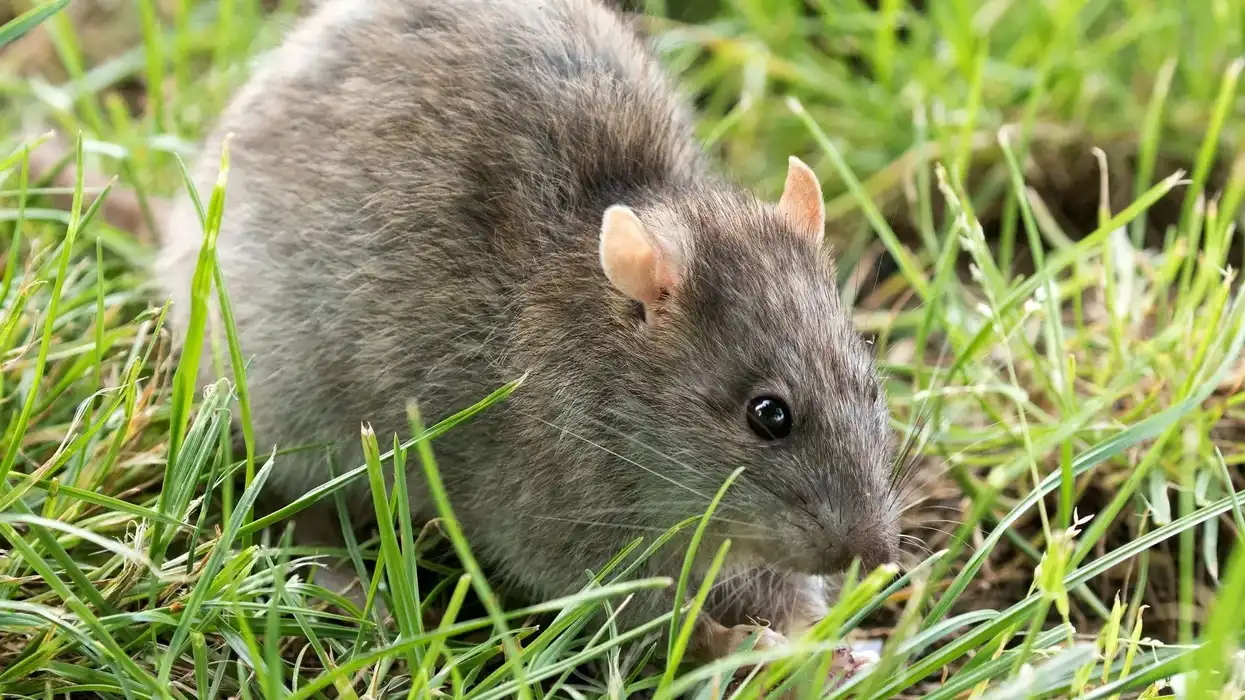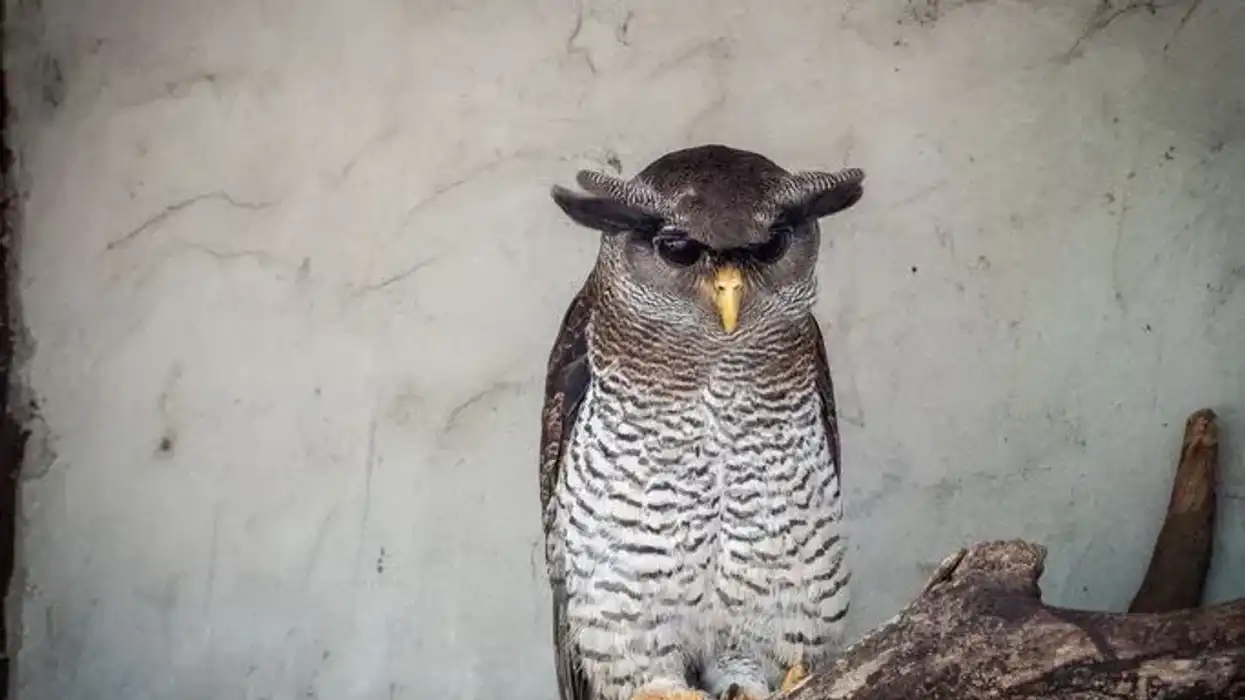Have you ever heard about the wild sheep species of North Africa, the Barbary sheep? Let us dive deep into the topic and know more about this sport hunting animal.
The Barbary sheep is a member of the Bovidae family and a native of North Africa and has six subspecies. It became a rare species in its native range but was introduced to other parts of the world, such as southern Europe and North America.
They are also called 'waddan' and 'arwi' in the Berber language and as 'moufflon' in some former French regions. They are popularly known as 'auodad' among the Berbers, a North African group of people.
Their scientific name is Ammotagus lervia which means 'sand goat' in the Greek language, referring to its color. They are called 'auriss' in the Spanish language.
In 1900, the first aoudad was introduced in the United States to be kept in zoos which were later set free in the wild in Texas and New Mexico. Therefore, the wild population of these animals has developed in southwestern parts of the United States.
To explore more sheep species, check out our articles on sheep and the Merino sheep.
Barbary Sheep Interesting Facts
What type of animal is a Barbary sheep?
A Barbary sheep (Ammotragus lervia) is a goat-like animal of the family Bovidae, native to northern Africa that lives in small family groups.
What class of animal do Barbary sheep belong to?
A Barbary sheep (Ammotragus lervia) belongs to the class of Mammalia.
How many Barbary sheep are there in the world?
The population of Barbary sheep (Ammotragus lervia) in the world is nearly 5000 to 10,000 individuals.
Where do Barbary sheep live?
A Barbary sheep (Ammotragus lervia) lives in dry mountain regions and desert mountains.
What is a Barbary sheep's habitat?
A Barbary sheep's habitat is arid mountainous areas of northern Africa, canyons, and arid southwestern United States mountains. They are excellent climbers and well adjusted to their habitat which contains steep rocky paths.
Who do Barbary sheep live with?
Barbary sheep (aoudad) live with other animals of the same breed in small family groups comprising adult male and female sheep and offsprings of different ages.
How long do Barbary sheep live?
A Barbary sheep (aoudad) lives for nearly 21 years in captivity and for nearly 10 years in the wild.
How do they reproduce?
Breeding season is usually from September to November, and these animals breed once a year. During the estrus period, females lick the sides of males and both animals touch each other muzzles.
Males achieve copulation by mounting the females. The gestation period is nearly 160 days, and baby sheep are born from March through to May. Mostly one offspring is reproduced, and one in every seven births, twins are born.
The offspring can climb the rocky mountains immediately after birth. Males gain sexual maturity at nearly one year of age and females a bit later than males, around 19 months.
What is their conservation status?
According to the IUCN Red List, the conservation status of aoudads is classified as Vulnerable. However, they are protected by law and and measures are taken to conserve them in zoos and reserves.
Barbary Sheep Fun Facts
What do Barbary sheep look like?
Barbary sheep are large sheep that are sandy brown and darkens as they age. They have a dark line along their backs, lighter underbelly, and reddish or grayish brown legs.
Adult males have shaggy hair hanging from their throats that extends down to their chests. This hair is referred to as a vertical mane and looks as if they have a beard.
Their horns are smooth with slight wrinkles and are positioned in a triangular cross-section. Their horns are almost 30 in (76 cm) and are first curved outward, then backward, and finally inward.
How cute are they?
They are neither cute nor gross but they look robust. We cannot deny the fact that the lambs look very cute like any other baby animal.
How do they communicate?
Like any other territorial mammal, Barbary sheep have tactile and chemical senses to communicate with other animals or group members. However, they display their aggression by fighting with their horns.
How big is a Barbary sheep?
A Barbary sheep is nearly 2-3 ft (60 - 90 cm) tall as measured at the shoulder and are nearly 5 ft (1.5 m) long. These are nearly two times smaller than a European bison.
How fast can Barbary sheep run?
A Barbary sheep is good at running uphill to escape predators and can attain a speed of 31-37 mph (50-60 kph). They are very nimble-footed and can jump over 7 ft (2 m).
How much do Barbary sheep weigh?
A Barbary sheep's weight ranges from 88-309 lb (40-140 kg).
What are their male and female names of the species?
Male aoudads are called rams, and female aoudads are called ewes.
What would you call a baby Barbary sheep?
A baby or offspring of Barbary sheep (Ammotragus lervia) is called a kid or sometimes called a lamb.
What do they eat?
Aoudads are herbivorous animals and feed on different vegetation such as shrubs, lichens, and grass. Their diet changes seasonally with grass being the most consumed during winter, and shrubs are a staple food throughout the rest of the year.
They get the water required for metabolism from the leaves and grass they eat. If a water source is available, they drink and lie around in it.
Are they dangerous?
Aoudads are not dangerous to humans, but they are aggressive and fight with males of the same species or different using horns. They show their aggressive nature by threatening postures like head-on charge and wrestling.
Both males and females are seen in fights, but females rarely use a head-on charge act. Like many other related species, aoudads do not kick. These male animals are also known to show dominance to gain social hierarchy, but a female always leads the group.
Would they make a good pet?
Aoudads are a type of wild sheep that live in mountain ranges and so, they do not make a good pet. They are commercially bred for their meat, hair, horns, and also for sport hunting.
Did you know...
Barbary sheep (Auodad) are called sheep, but some recent genetic studies revealed that they are more closely associated with wild goats. Aoudads are a real species rather than a hybrid, and straddles the biological divide between sheep and goat.
Barbary sheep tastes good when cooked properly and smells and tastes like other game meat.
North African predators like caracal, Barbary lion, and Barbary leopard eat Barbary sheep. On the other side, humans are vital in Barbary sheep hunting and have made this game animal as part of their diet.
Aoudads can run uphill very fast to escape predators but sometimes play a clever trick of being motionless. This confuses its predators by camouflaging with its surroundings, which is possible with its sandy-brown coat.
The female aoudad has smaller horns of a size range 12-27 in (31-69 cm) than the male that ranges between 14-36 in (36-91 cm).
Aoudads can have some adverse effects on human life as they can become agricultural pests like bighorn sheep and mule deer.
Where do Barbary sheep come from?
Barbary sheep's native population is from Sudan, Niger, Morocco, Mauritania, northern Mali, Egypt, Libya, northern Chad, Tunisia, and Algeria of northern Africa. They were later introduced to other regions of Africa, Mexico, Spain, the United States, and the Niihau Islands (Hawaii).
They are found in Guadalupe National Park, Chinati mountains, Palo Duro Canyon, Trans-Pecos, and other New Mexico and Texas regions.
What are Barbary sheep used for?
Barbary sheep are used by nomads of Sahara for their meat, horns, ligaments, hair, and hide. They are also used for sport hunting in the United States.
Here at Kidadl, we have carefully created lots of interesting family-friendly animal facts for everyone to discover! Learn more about some other mammals from our llama facts and highland cattle facts pages.
You can even occupy yourself at home by coloring in one of our free printable bighorn sheep coloring pages.










